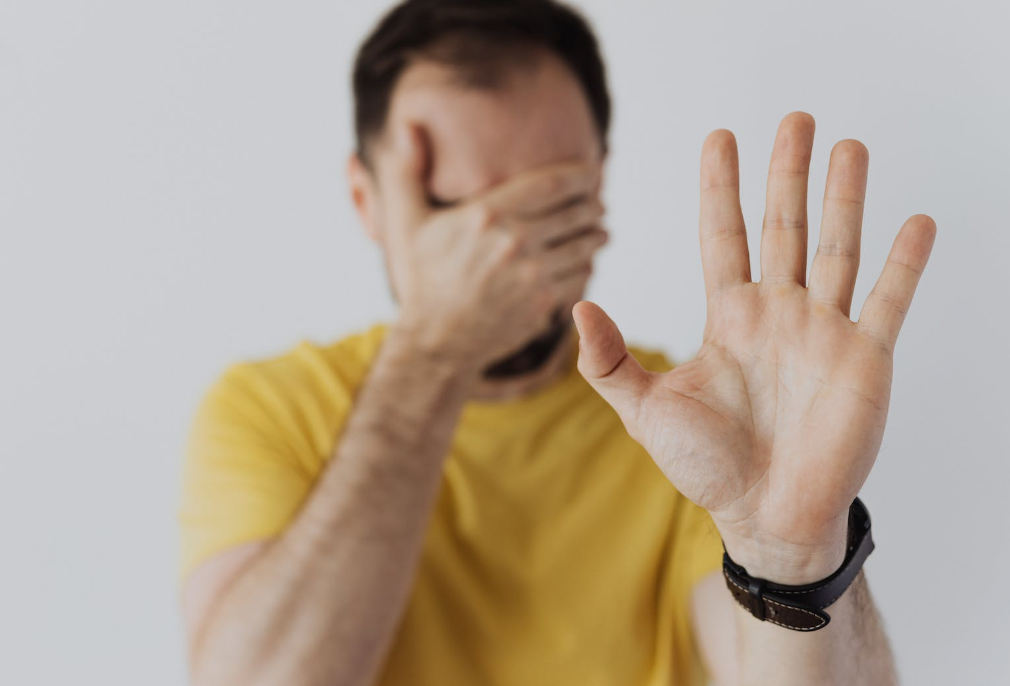Visualization For Anxiety
Learn about the technique for dealing with anxiety-related visualization.

Selfpause Affirmation App
Download the app to get 1,000’s of affirmation meditations and everything you need to write, record and listen to your own.
Visualization for anxiety can be practiced anywhere you go. If you feel anxious, try picturing a beach or other place. Open your eyes and imagine yourself there, and you’ll soon achieve a state of calm and relaxation. This technique can help you deal with anxiety, whether you’re at work, home, or school.
Stop sign visualization

One method for dealing with anxiety is the Stop sign technique. It involves picturing a bright red STOP sign and repeating the word “stop” to yourself. By doing this, you will force yourself to interrupt your thoughts and stabilize your mind. The idea behind this technique is to get your mind to stop thinking about the issue that is causing you anxiety.
When we are faced with a difficult situation, we tend to create a mental picture of our worst-case scenario. This is a form of self-sabotage because we try to convince ourselves that something is going to happen to us. But if we stop thinking about the worst-case scenario, our fear will dissipate and we can move forward. The Stop sign technique can be used whenever you feel overwhelmed by your fears.
Once you learn to visualize your Stop sign, you will experience a new level of relaxation and self-regulation. When you begin to feel less anxiety, you may also start to notice other elements of the experience that used to make you feel uncomfortable. For example, you may notice the sounds that were previously absent or the heat of the sun that you visualized. As you continue to practice this technique, you will begin to experience more powerful visualizations.
Visualization is not a magic solution for anxiety, but it can help you relax and cope better with high levels of stress. Visualization can also help you enjoy daily activities more since it gives you an escape from the anxious state. You can also do this visualization technique as often as you feel necessary. The most important thing to remember when practicing visualization is that you must follow the instructions carefully.
Safe space visualization

If you’re suffering from anxiety, visualization techniques can help you overcome your fear. Try visualizing a place that feels safe and calm. You can use an abstract or physical space. Once you have your safe place in mind, you can begin to breathe normally and take yourself to it. It doesn’t have to be big or fancy.
Describe your safe space as clearly as possible, and try to touch it with your senses. You may even want to write it out, paint it, sculpt it, or videotape it to help you remember the feelings that are associated with this place. Make sure to include every detail and think of different ways that you might feel safe there.
You can also listen to soothing music while you’re visualizing. The music can help you envision your safe place. It can be chanting or a recording of nature. Wind chimes are also relaxing. Playing these sounds will help you visualize your safe space more quickly. It is also helpful to visualize the sounds of your safe place, whether it is the sound of water or the sounds of birds chirping.
Safe space visualization is an effective stress-reduction technique. When you close your eyes and visualize a calm and peaceful environment, you instantly access positive feelings and emotions. Visualization works because the brain cannot differentiate between reality and imagined events, so your body will respond to the soothing ideas and feelings you have in your mind.
Happy memory visualization

Happy memory visualization is a powerful tool to help you deal with anxiety and stress. It allows you to imagine a recent event and its emotions, without actually having to think about it. By imagining it, you can bring that feeling into the present moment. Then, you can try to recall and relax around it.
To use happy memory visualization for anxiety, sit in a quiet place and get into a comfortable position. First, imagine that happy memory on a blank canvas. Then, fill in the blanks with the details of that memory. Try to imagine everything about it, including the people and the environment.
You can use visualization whenever you feel anxious or stressed. It takes practice but will eventually become second nature. Try it when you’re in a stressful situation: Take a few minutes to visualize the event you’re anxious about and feel more comfortable with it. This will calm you down and help you get back on track.
Light visualization
Visualization is an excellent way to relax and calm your body and mind. You can start by imagining a comfortable place to sit and relax. You can also visualize something that is safe for you. For example, you can imagine that you are in a room with a window. When you imagine this, you can picture people chatting outside.
If you practice visualization regularly, you may notice that you can add new elements to the experience. For example, you may visualize the sounds associated with a safe environment or the heat from the sun. This makes your visualization more powerful and more effective when you need it most. You can even practice visualization during stressful situations if you’d prefer.
Visualization can also help you focus and relax. For example, when you’re about to perform an important task, you may be anxious. Taking a deep breath in a relaxed environment can help you calm down. You may even be able to lower your stress hormone, cortisol. So, light visualization can be an excellent option if you want to feel more at ease and have more energy.
Visualization can help you reduce your anxiety by imagining a more peaceful, happy environment. While this may take some time to get used to, the technique will eventually help you overcome your anxiety. Another great method is progressive muscle relaxation. In this method, you imagine yourself doing something you enjoy, instead of worrying about an upcoming task. You can also imagine a new hobby or boosting an existing one.
A recent study conducted on the effects of visualization on homeless teenagers found that the process had a positive impact on their stress levels. People experiencing homelessness often experience unique levels of stress, so it is important to keep stress levels low. The study found that visualization significantly decreased stress levels in all the subjects, and affected their well-being.
Before beginning a visualization session, prepare your environment so that you feel comfortable and relaxed. Ideally, you should sit or lie in a comfortable position that allows you to breathe easily. If possible, remove any heavy jewelry or restricting clothing.
Our Top FAQ's
Visualization techniques can be used to manage anxiety symptoms by helping an individual to focus their attention on calming, positive images or scenarios. This can help to shift the individual’s focus away from anxious thoughts and feelings, and can also help to relax the body and mind. Visualization can be practiced in a variety of ways, such as by focusing on a peaceful scene or by imagining oneself in a calm, safe place.
Some specific visualization exercises that can help with anxiety include:
- Imagining oneself in a peaceful place, such as a beach or a forest.
- Visualizing a calming color or image, such as a blue sky or a white light.
- Creating a “safe place” in the mind, which can be a place where the individual feels completely safe and at peace.
- Using guided visualization exercises, in which an individual follows a script or a recording that leads them through a visualization exercise.
Visualization can be used in conjunction with other anxiety management techniques, such as relaxation techniques (such as deep breathing or progressive muscle relaxation) or medication. It is important to consult with a healthcare professional about the best treatment plan for managing anxiety.
Visualization can be effective for managing anxiety symptoms in a general sense, but it may be particularly helpful for certain types of anxiety, such as performance anxiety or social anxiety. It is important to work with a healthcare professional or a mental health professional to determine the most appropriate treatment approach for specific types of anxiety.
While visualization can be a helpful tool for managing anxiety, it is important to note that it is not a substitute for professional medical or mental health treatment. If anxiety symptoms are severe or persistent, it is important to seek help from a qualified healthcare professional. It is also important to be aware that visualization may not be suitable for everyone, and it is always a good idea to consult with a healthcare professional before beginning any new treatment approach.
